A good dehumidifier can make miserable musty air crisp, clean and dry.
But then, having a dehumidifier in the wrong settings is a little different than not having one at all.
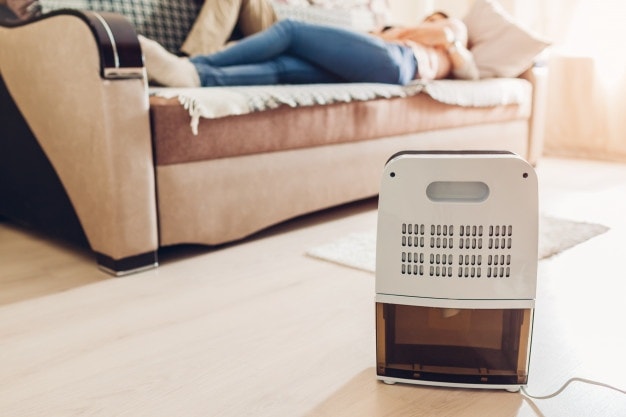
This guide will walk you through all the necessary dehumidifier settings you need to achieve the desired room humidity throughout your house.
Dehumidifier Settings for Home
Although there are no perfect humidity settings for a dehumidifier, it is crucial to consider your home’s indoor humidity levels.
A home’s suitable relative humidity lies between 30-50% humidity. Moisture levels of about 50% upper limit are ideal.
It is advisable to maintain a dehumidifier setting of 60% and below to curb the growth of mold and mildew. However, an under 50% dehumidifier setting is necessary to curb dust mite problems.

Excessive humidity can make your home lethargic and uncomfortable. You sweat when you are in a humid space because the room feels warmer to you, and your body fails to regulate the internal temperature.
Left unchecked long-term, high relative humidity encourages the growth of mildew and mold that ruins your possessions, puts your health at risk, and creates an unpleasant musty odor.
Higher moisture levels also prompt the growth of fungus, dust mites, and molds thus create breathing complications for asthmatics and allergic individuals.
The low humidity of below 30% is just as bad because when the air is too dry, you feel cold, itchy, develop sore throats, and have breathing difficulties like coughing and wheezing.
Therefore, a dehumidifier setting of 45% is ideal and practical for comfortable home indoor air. You can avoid problems by staying in the proper ranges of 45-50%.
Dehumidifier Settings Chart
So, what’s the Ideal setting to have a dehumidifier on? Use this Dehumidifier Settings chart below to estimate the setting your dehumidifier should be on.
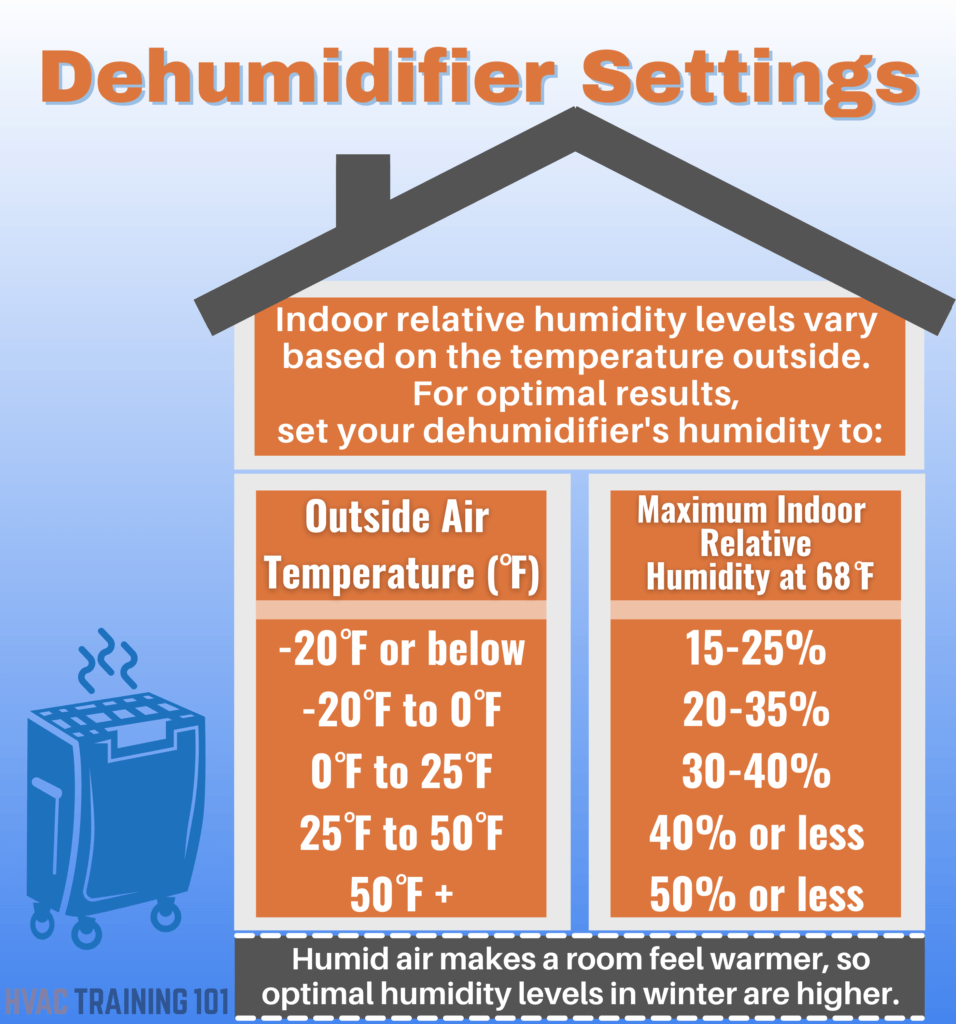
Dehumidifier Setting for Basement
The surrounding ground moisture and the soils tend to cause higher humidity, odors, and molds in the basement.
Apart from the soil, partially open basement windows contribute to the high moisture levels because they let in additional humidity from the outdoors.
Ideally, the ideal settings for the basement are around 50%. Levels above 60% attract molds and odor. To avoid this, ensure that your dehumidifier is at 60% or less.
You can tell the settings to use if the dehumidifier continuously runs and never seems to reach an adjustment or if the temperatures during the cold days drop below 65℉.
Dehumidifier Setting for Summer
Moisture levels are at their highest during the summer season. This causes the surroundings to be overly dumpy and encourages the growth of microorganisms such as mildew and molds.
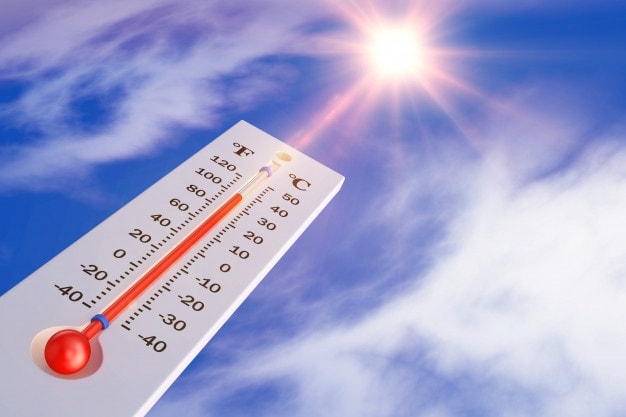
Set your dehumidifier at relative humidity levels of 50% such that the air only holds 50% of the moisture it can at that temperature. In colder climates, the settings should range between 30-40% during summer to prevent window condensation.
If the vapor level is higher than 50%, the air is too wet and can trigger allergies and breed dust mites, mildews, and mold.
It is also crucial to close windows to enable the unit to work efficiently.
Dehumidifier Setting for Winter
A dehumidifier may be unnecessary during the chilly winter months because the air is usually dry during this period. After all, you might need to add more humidity rather than remove it.
However, if you should, avoid operating your dehumidifier when the thermometers record temperatures below 60℉. This is because when the dehumidifier gets below 60℉, the moisture it traps from the surrounding can condense and frost upon the cooling coils, thus damaging the unit.
You might only use a dehumidifier during the fall if your moisture levels stay at 50% ranges most of the time.
Dehumidifier Setting for Commercial
Commercial dehumidifiers are made to banish vapor from a large-scale industrial environment. These industrial-grade units are great for severe environmental conditions and tend to run longer at lower moisture settings but higher operating costs.
They use a dual cooling system to reduce moisture levels and stand up to extreme cold and dry days.
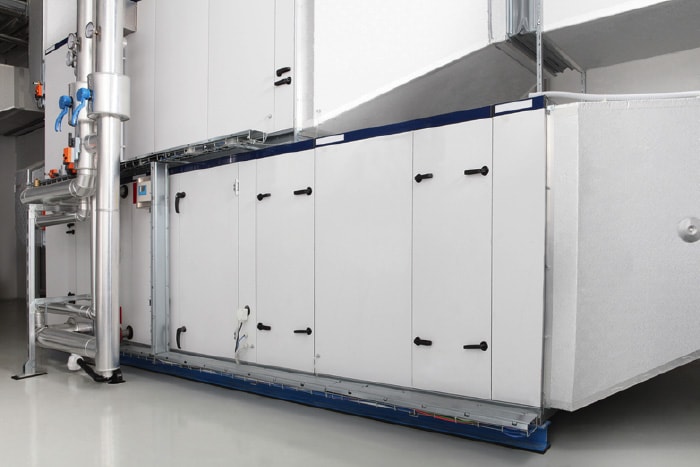
The automatic in-built humidistat control automatically turns the unit on and off whenever the temperatures rise above or below the set point.
These heavy-duty units’ factory setting covers a moisture range of between 50% to 60% all through the year, regardless of the season.
How to Set a Dehumidifier
In order to keep your dehumidifier working correctly, here is a guide on how to set your dehumidifier for optimal conditions.
1. Pick the Right Dehumidifier Location
The location you choose for the dehumidifier impacts its performance. Regardless of the model or size, there should be free space around the unit.
Ensure that you buy portable units depending on your room’s ratings because they work best where they are most needed.
Check the owner’s manual for your unit’s specifics.

2. Set Up Moisture Draining
Ensure you drain the tank whenever it gets full. You can do this manually by emptying and replacing the collection bucket or using gravity draining by attaching a tube to the unit’s back and divert the moisture to a nearby drain.
There are units with internal condensate pumps that push collected water into a sink.
3. Set Your Ideal Humidity Level
With drainage set up and the dehumidifier in the correct location, set it to suitable moisture levels. Onboard humidistats will automatically maintain the level you set.
Ensure that you set it at an optimal relative humidity level at 45% to 50%.
4. Check Its Progress
If it is running after installing, ensure that you check to confirm everything is working as it should. For instance, you’ll need to clean over time, review its drainage, and observe the general maintenance tips available in the owner’s manual.
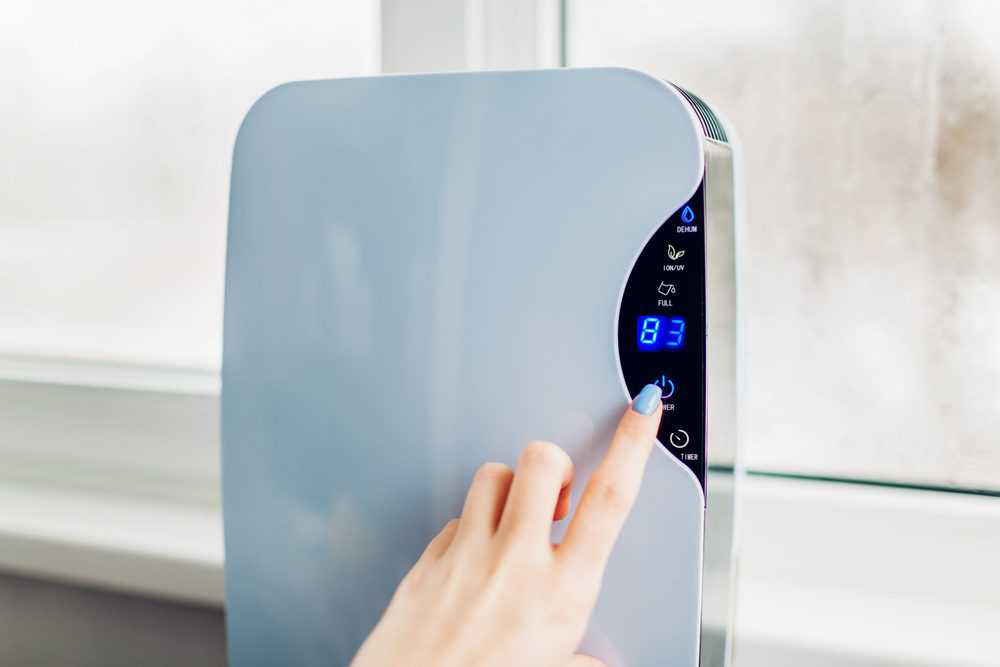
Conclusion
You don’t know how much you need a dehumidifier until you face a humid and muggy living space. A dehumidifier prevents you from suffering from breathing complications and helps maintain the conditions of most household items. This is, however, only if it runs on the ideal humidity settings.
People Also Ask
Do you still have questions on dehumidifiers? Is it something you are trying to figure out and you want some more light shed on it? To save you from the agony of scouting all over in search of basic information, check out some answers to the most common questions relating to dehumidifiers below.
High humidity levels and dampness make the best environment for mold to grow and thrive. The air vapor and the hot temperatures generate excess moisture that triggers mold growth.
Therefore, the ideal mold remediation during high humidity is by setting the dehumidifier at a relative humidity of between 30% and 50%.
Most dehumidifiers have onboard humidistats that allow you to set a suitable relative humidity for a room. The dehumidifier will automatically cycle on and off depending on the climatic changes and maintain the desired relative humidity level.
They automatically shut off once it reaches the set relative humidity level.
An ideal humidity level is the humidity level your home needs for a particular climatic condition.
Maintaining this level in your living space ensures that you feel warm during the fall and cool in the sweaty summer months. Compromising the humidity level affects your home as well as your health.
Ideal humidity levels change depending on the climatic conditions. To evaluate the most suitable humidity level during current indoor conditions, you’ll need to measure the room’s temperature and relative humidity. A variation in temperature affects the ideal humidity level. Ventilation, showering, or boiling water indoors can increase humidity levels.
